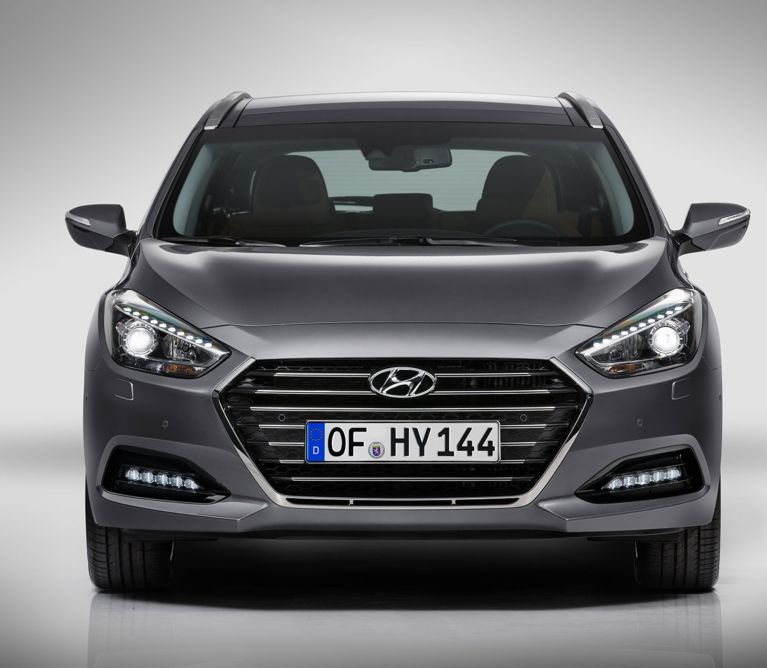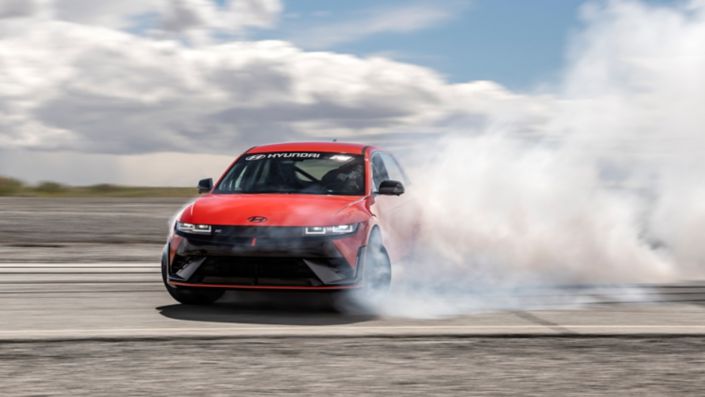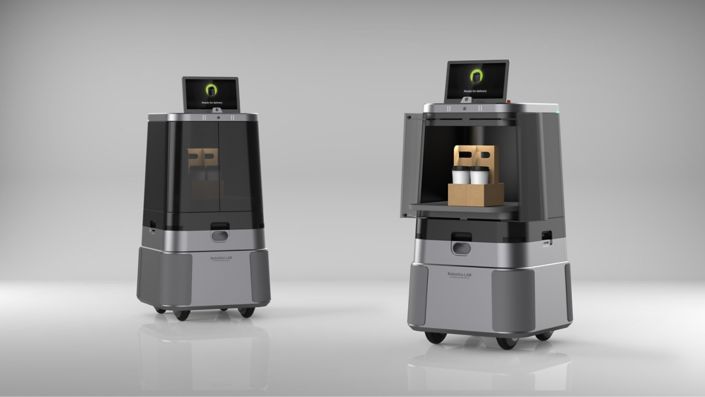- Advanced Traction Cornering Control (ATCC) improves ride and handling for wagon
- Rear Electronic Damping Control System offers three drive modes
- Long wheelbase and wide track offer excellent handling and stability
Press material
Hyundai’s chassis engineering team for the enhanced New i40 was tasked with improving on the original model’s already highly competent ride/handling balance.
“For better cornering and to improve the overall agility of the New i40, Hyundai’s engineering team developed the Advanced Traction Cornering Control (ATCC). The ATCC improves traction and handling, all specially tailored for the New i40 and its driving characteristics,” explains Axel Honisch, General Manager Vehicle Test and Development.
The system uses electronic sensors to emulate the behaviour of a limited-slip differential during cornering, providing additional traction, better grip and improved handling. The computer-controlled system applies the brake to the inside wheel in a turn and directs more torque to the outside wheel, enhancing stability and boosting driver confidence. The operation is seamless, fully automatic and the small application of the brake is imperceptible to the driver.
The system uses electronic sensors to emulate the behaviour of a limited-slip differential during cornering, providing additional traction, better grip and improved handling. The computer-controlled system applies the brake to the inside wheel in a turn and directs more torque to the outside wheel, enhancing stability and boosting driver confidence. The operation is seamless, fully automatic and the small application of the brake is imperceptible to the driver.

The Drive Mode settings are enhanced by the new Rear Electronic Damping Control System (ECS), which is equipped on the rear axle of the most popular New i40 body type – the wagon. Thus, the driver can adapt the suspension settings through the drive modes to suit his driving style. In addition to the rear suspension also the steering, throttle response* and transmission logic* are influenced by the selection.
The disc brakes, backed up by ESC, ABS, EBD and Brake Assist systems as standard, is carried over from the previous generation model.
The robust body shell, long wheelbase (2770 mm) and wide track 1591 mm in the front and 1597 mm in the rear were unchanged as they provide an excellent foundation for the fully independent suspension, by MacPherson Struts at the front and a multi-link system at the rear. The electric rack and pinion power steering with its responsive 2,78 turns of the steering wheel from lock-to-lock is also carried over.
* Models with DCT/AT
The disc brakes, backed up by ESC, ABS, EBD and Brake Assist systems as standard, is carried over from the previous generation model.
The robust body shell, long wheelbase (2770 mm) and wide track 1591 mm in the front and 1597 mm in the rear were unchanged as they provide an excellent foundation for the fully independent suspension, by MacPherson Struts at the front and a multi-link system at the rear. The electric rack and pinion power steering with its responsive 2,78 turns of the steering wheel from lock-to-lock is also carried over.
* Models with DCT/AT
Back to New Hyundai i40 Overview
Consumption Data*
Gasoline Engines
1.6 GDi (135 PS): Fuel consumption combined: 6.6 - 6.1 l/100 km; urban: 8.5 - 7.7 l/100 km; extra-urban: 5.5 - 5.2 l/100 km; CO2 emissions combined: 153 - 140 g/km
2.0 GDi (165 PS): Fuel consumption combined: 7.5 - 7.1 l/100 km; urban: 10.4 - 9.4 l/100 km; extra-urban: 6.2 - 5.8 l/100 km; CO2 emissions combined: 176 - 165 g/km
Diesel Engines
1.7 CRDi (116 PS): Fuel consumption combined: 4.8 - 4.2 l/100 km; urban: 5.7 - 4.8 l/100 km; extra-urban: 4.3 - 3.8 l/100 km; CO2 emissions combined: 118 - 110 g/km
1.7 CRDi (141 PS): Fuel consumption combined: 5.1 - 4.3 l/100 km; urban: 5.2 - 4.8 l/100 km; extra-urban: 4.6 - 4.1 l/100 km; CO2 emissions combined: 134 - 114 g/km
*Depending on trim and tyre specifications.











